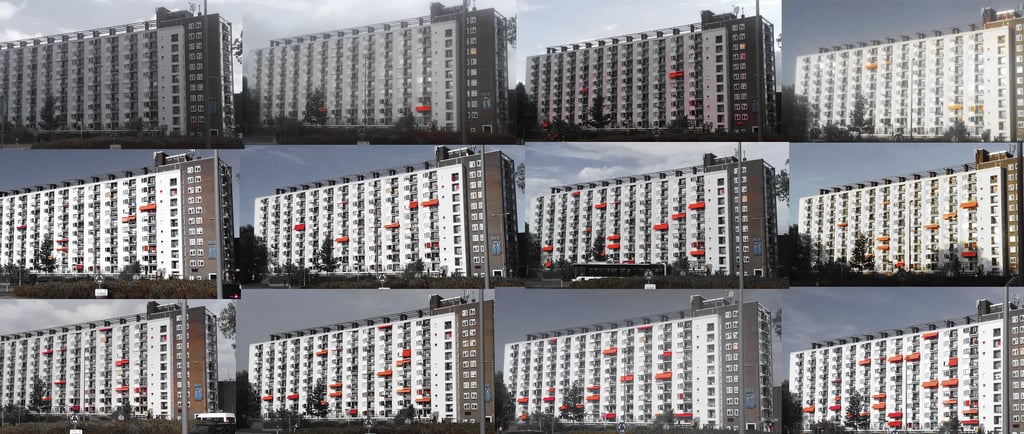Beukelsdijk Project, Musicographics
I have started a new Musicographics project based on an apartment building in Beukelsdijk, Rotterdam. The idea is to construct a timeline based on the red shades on the building throughout the year.
12/29/20182 min read


I have started a new musicographics project based on an apartment building in Beukelsdijk, Rotterdam. The idea is to construct a timeline using the changing presence of red shades on the building’s façade throughout the year. These red awnings act almost like moving notes, shifting with the weather, the time of day, and the habits of the residents.
The potential here is to create a score that is both architectural and temporal, mapping human presence and environmental conditions into a visual rhythm. Over time, the changes in the awnings could form a living notation system, capturing the building’s daily and seasonal variations. In this sense, the façade becomes a canvas of improvised decisions made by its inhabitants, translated into musical form.
However, there are challenges. With very few sunny days in the Netherlands, the project is limited in how often the awnings appear clearly enough to register meaningful variation. This raises questions about the richness of the dataset and whether it can sustain a full composition. Yet perhaps this scarcity is not a flaw but a truthful depiction of the project’s context. The lack of sun is itself part of the lived experience of the Netherlands, and the minimal activity in the shades could become an authentic feature of the score. In this way, absence of information becomes information.
To expand the vocabulary of the project, I am also considering nighttime mapping. After dark, differences in the color and intensity of household lights could be recorded, adding another layer of variability. This brings forward an interesting duality: in the daytime the building communicates through its shades, tied to sunlight and weather, while at night it speaks through artificial light, shaped by the private lives unfolding behind the windows. By combining both, the building could be read as a 24-hour instrument, producing a dynamic and evolving musicographic representation.
On the technical side, tools such as time-lapse photography, color tracking, image recognition, and spectral analysis of light could help capture and quantify these variations with greater precision. These methods might allow the project to move beyond documentation and into a structured mapping that can be directly translated into sound design.
This experiment asks: how can architecture, weather, and human behavior be notated as music? And can the subtleties of life in a specific location—its light, its rhythm, and even its limitations—become the foundation of a new kind of score?